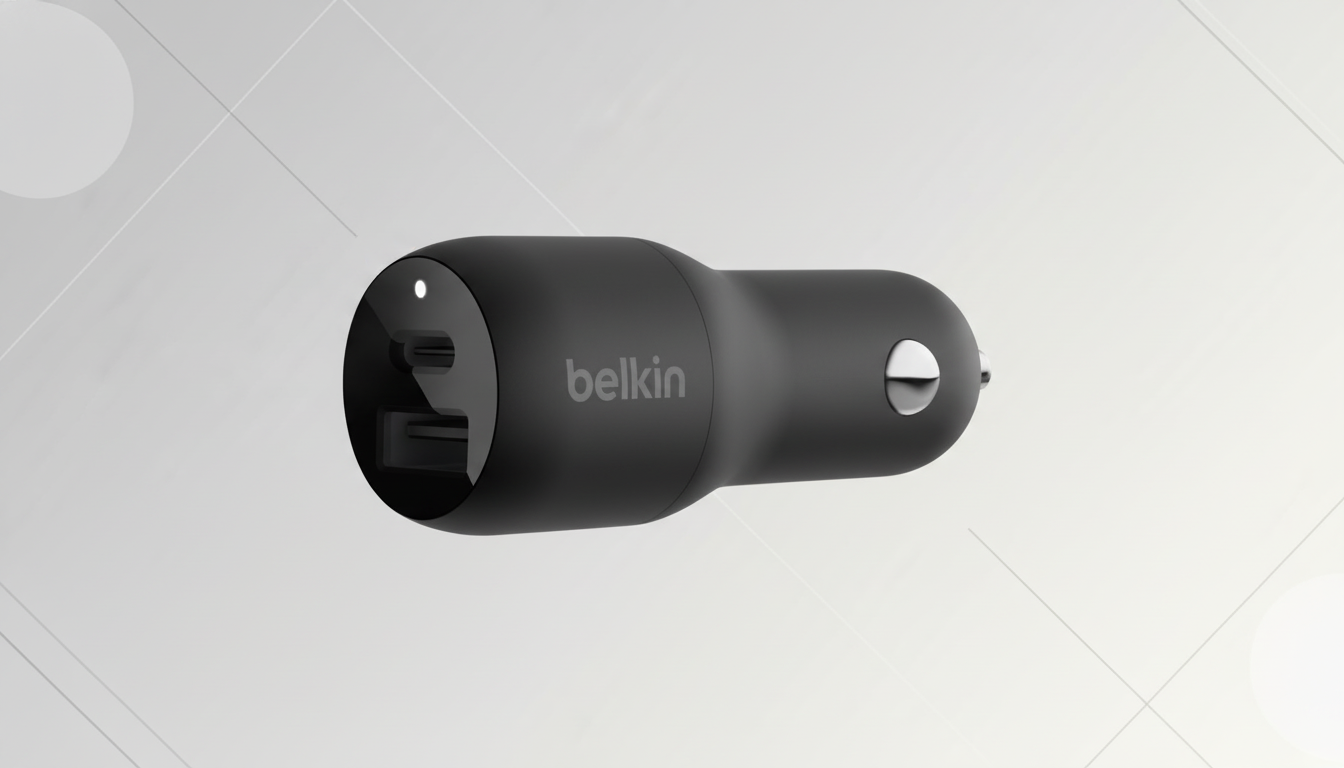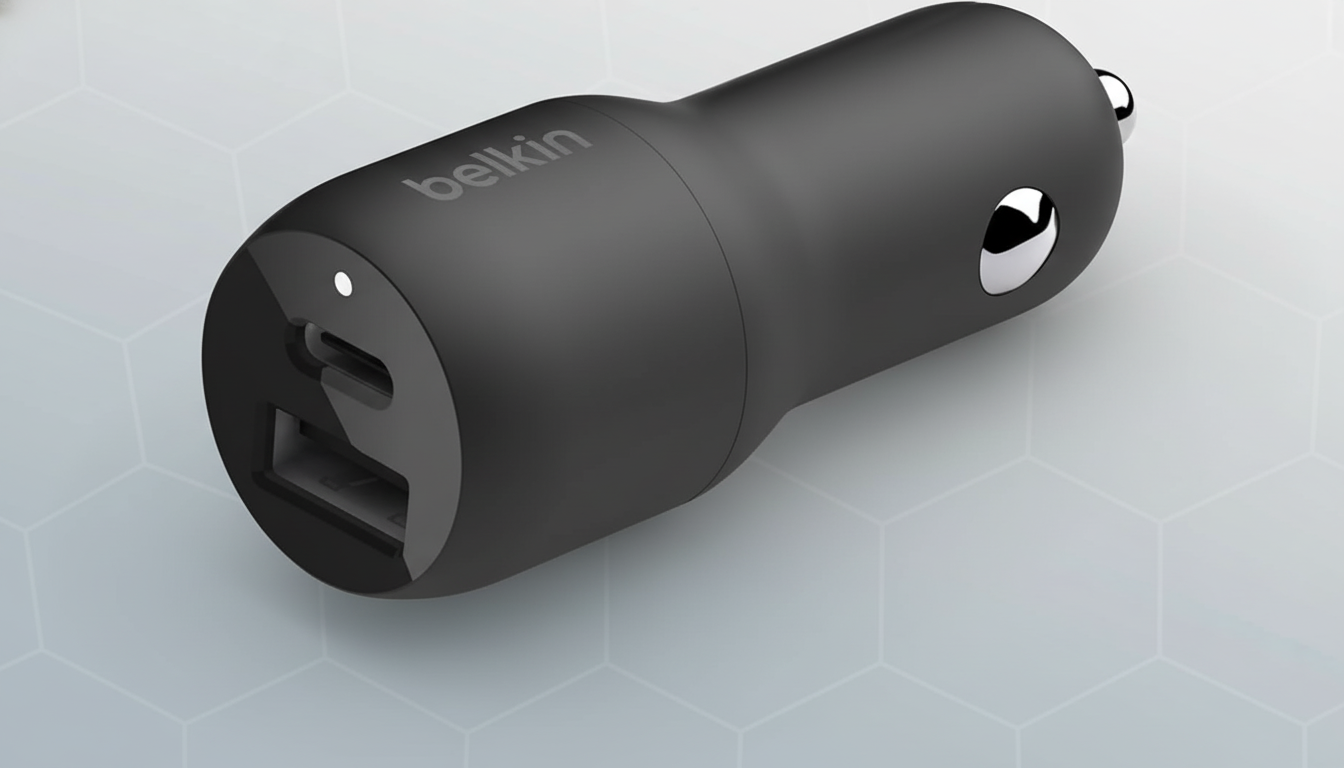A new discount has cut the price on the Belkin 37W Dual USB Car Charger down to $9.99, a full 60% off its $24.99 list price. For a small charger grounded in a blend of USB-C Power Delivery and backward-compatible USB-A, it’s a rare price-to-performance bargain, and a great upgrade for anyone still slogging it out with weak car USB ports.
Why this discounted Belkin 37W car charger deal stands out
Budget car chargers usually max out at 18W to 24W, if they even bother to include USB-C at all. Belkin’s charger offers 37W in combined output, thanks to a 25W USB-C port and a 12W USB-A port. This means you can fast charge your new phone without leaving your second device whimpering for power.

This $10 charger is frankly cheaper than most no-name options and comes from a company with a good reputation for mobile power accessories. It’s also a lot more versatile than older chargers with dual USB-A: the future is USB-C with Power Delivery now in use across major phone manufacturers, meaning this charger will work with your new phone while still powering up older gadgets.
Fast-charging credentials and what 25W USB-C PPS delivers
The headline feature, of course, is the 25W USB-C port with PPS, a technology standardized by the USB-IF that enables this adapter to dynamically adjust voltage and current to reduce heat and maintain higher charging speeds. That’s important because many flagship phones use PPS to achieve their headline rates.
For example, Samsung’s Galaxy S23 peaks at 25W on its Super Fast Charging profile, and Google’s recent Pixel models sit squarely at around 20–23W based on whether PD/PPS is in the mix. Apple promises around 50% charge in about 30 minutes for iPhone models when utilizing a 20W adapter or larger. Belkin’s 25W port is ideally built for the actual usage draw numbers, and many phones can regain a significant proportion of lost charge over a short drive.
The 12W secondary USB-A port is similarly useful. It’s perfect for small items like your earbuds case, an older phone in the center console, or a dash cam. When using both, the total 37W budget ensures your primary device maintains fast charging while a second device has a low, stable, and continuous refuel.

If you’ve been using the USB port in your vehicle, you’re probably charging ten times slower than that. A large number of manufacturers’ USB ports are capped at 5W or less, as much as car enthusiasts and homeowners would like to believe. That’s fine for an infotainment system, however, too slow for today’s batteries. This inexpensive, portable adapter was the difference between crawling to the next shopping zone parking lot and streaming while navigating in comfort on 12% battery.
Belkin’s mix of USB-C and USB-A also smooths out the transition many households are making. Newer phones, tablets, and accessories are moving to USB-C, while plenty of legacy devices still rely on USB-A cables. On road trips, that duality reduces cable chaos and keeps passengers covered. Worth noting: 25W on USB-C won’t fully unlock devices that request 45W or higher, such as some large tablets or laptops, though those will still charge slowly. For phones, earbuds, handheld consoles, and smaller tablets, 25W PD with PPS hits the sweet spot between speed and heat in a car environment.
Design and safety considerations for in-car fast charging
Belkin’s charger isn’t the tiniest nub-style adapter, but it’s still compact and easy to insert and remove. A subtle status light helps confirm power at a glance without lighting up your cabin.
Under the hood, the brand typically includes overcurrent, overvoltage, and temperature protections—important safeguards when fast charging in a hot vehicle. The build quality advantage is not just aesthetic. Consistent voltage negotiation and reliable thermal management are crucial for PPS to work properly; cheaper adapters can throttle early, negating the benefits of higher wattage claims.
Is this Belkin 37W dual USB car charger worth $9.99
Short answer: yes, for most drivers. That’s a name-brand 25W USB-C PD/PPS port for $9.99 and a 12W USB-A backup, or enough wattage to fast charge almost any phone and peripheral a two-seat vehicle might carry. You’ll want a 45–67W dual USB-C model if you need two high-wattage USB-C ports or more for the fantasy of running PC-class speed. Alternatively, this is a fast, cost-effective improvement that doesn’t add complexity. It’s a deep 60% discount, making it compelling to buy whenever a modern competitor is slow, inconvenient, or stuck around USB-A.

